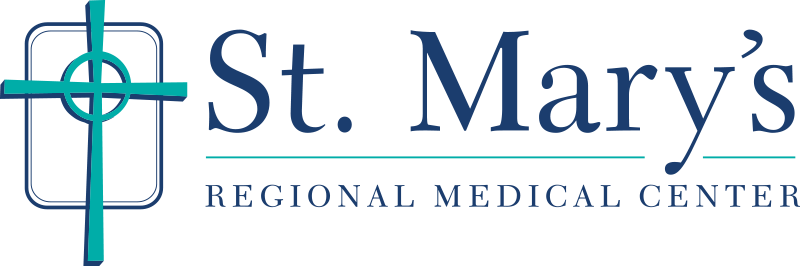Mammography, Ultrasound, Biopsy for Breast Cancer
St. Mary's Women's Imaging Center is a freestanding facility located one-half mile (see map) from St. Mary's Regional Medical Center. It offers women a comprehensive range of imaging, biopsy and nursing services, including:
- 2D and 3D digital mammography (breast cancer detection)
- InveniaTM Automated Breast Ultrasound System (ABUS) system (breast cancer detection)
- Bone density assessment (for fracture risk due to osteoporosis)
- Breast biopsy (ultrasound, fine needle, stereotactic)
- Resources for breast cancer patients
To make a mammography or ultrasound appointment, call 580-249-3932. For all other inquiries or to learn more about our services, call 580-249-3770.
Meet Our Nurse Navigator
Coping with a breast cancer diagnosis can be overwhelming, and patients often have many questions. To provide education and reassurance throughout the treatment process, Weslie White, RN, works in collaboration with the Women’s Imaging Center at St. Mary’s as a nurse navigator.
“I educate patients about what’s going to happen, their treatment options and the side effects they may have,” says White, who is also the Director of Oncology Services. “I help them make informed decisions,” she says, noting that decisions made early on regarding cancer care often affect the treatment patients may need down the road.
The nurse navigator can also help make appointments, provide information about hospital resources and help patients manage the personal and physical challenges they may experience throughout their treatment. Watch the video to learn more:
Digital Mammography
Mammograms are the most widely used and recognized imaging method for detecting breast cancer. This low radiation X-ray can often detect abnormalities in the breast before anything can be felt. Women who are age 40 and older are strongly advised to have a yearly mammogram.
St. Mary’s Women’s Imaging also offers 3D mammography, which is also called tomosynthesis digital mammography. 3D mammography is different than standard mammography because it takes multiple images of the breast at various levels and provides more detail. This can help make it easier to identify abnormalities, and is particularly useful for evaluating dense breast tissue. It can also reduce the number of callbacks for repeat testing.
Though mammography is an effective method for detecting breast cancer, in certain situations, such as women with dense breast tissue and those at increased risk of breast cancer, additional imaging tests (ultrasound, MRI or molecular breast imaging) may be needed for complete evaluation.
Breast Ultrasound
Ultrasound is a noninvasive, non-radiation examination that uses sound waves to detect disease and locate possible abnormalities in breast tissue. Ultrasound systems at St. Mary's Regional Medical Center are designed to provide doctors with precise images for efficient diagnosis of breast problems, and can be effective in distinguishing certain abnormalities in the breast such as lumps, solid masses and cysts. The systems enable the physician to perform high-resolution panoramic imaging or 3D scanning in real time.
The Women's Imaging Center is the first provider in the Northwestern Oklahoma and Southern Kansas regions to use the Invenia Automated Breast Ultrasound System (ABUS) for breast cancer screening. This system is used in addition to mammography for asymptomatic women with dense breast tissue and no prior interventions. ABUS can help improve detection of small cancers in dense breast tissue that cannot be seen on a mammogram alone.
Bone Density Testing / DEXA
Bone densitometry, also called dual-energy X-ray absorptiometry or DEXA, uses a very small dose of radiation to produce images of the spine and hips to measure bone loss from osteoporosis to assess a person's risk for developing fractures. Osteoporosis is a disease of aging that causes bone loss. As many as half of all US women and a quarter of US men 50 and older will break a bone due to osteoporosis, according to the National Institutes of Health. If you are a woman over 50, and particularly over 65, ask your doctor if you need a DEXA scan.
Learn more about bone density testing >
Breast Biopsy
St. Mary's Regional Medical Center performs breast biopsies (used to check breast tissue for cancerous cells) using various methods. The newest procedure, vacuum-assisted breast biopsy, uses a minimally invasive system in which the doctor uses mammography (sterotactic-guided biopsy) or ultrasound to locate the suspicious area. He or she then makes a tiny incision in the breast and uses a small probe with a vacuum to gently draw, cut and collect tissue into the probe's hollow chamber.
This biopsy technique enables several samples to be acquired at the same time. A local anesthetic is used. The biopsy is usually completed in less than one hour and patients go home with a small adhesive bandage. With fine needle aspiration (FNA), there is almost no scar at all. A local anesthetic injection is used to numb the breast. The doctor then uses a thin needle to remove a sample of cells from a suspicious area. This method is used when the doctor can feel the lump, and can guide the needle into place without mammography or ultrasound.
Upright Breast Biopsy Guidance System
St. Mary's Women's Imaging has added Hologic's Affirm™ Upright Breast Biopsy Guidance System to its diagnostic capabilities. The new guidance system addresses the challenges of upright breast biopsy by enabling rapid re-identification and targeting of areas only visible or better seen with 3D Mammography (TM) exams.
The imaging technology's superior performance, when compared to stereotactic biopsy, has several advantages, including its ability to easily target lesions, including those visible only in tomosynthesis images; shorter patient procedure time and lower doses for the patient as fewer exposures are needed.
Recommendations for Breast Cancer Screening
We recommend that women follow the American Cancer Society guidelines for early cancer detection:
- Yearly mammograms are recommended starting at age 40 and continuing for as long as a woman is in good health.
- Clinical breast exam (CBE) should be part of a periodic health exam, about every three years for women in their 20s and 30s and every year for women age 40 and over.
- Women should know how their breasts normally feel and promptly report any breast change to their healthcare providers. Breast self-exam (BSE) is an option for women starting in their 20s.
Breast Cancer Resources
We have an American Cancer Society® Resource Room where patients can choose from a selection of wigs, turbans, hats and other head coverings — free of charge. You'll also find brochures, pamphlets and other educational literature from the American Cancer Society to help you better understand your diagnosis and the treatment journey.
Location and Contact Information
St. Mary's Women's Imaging Center
316 W Owen K Garriott Rd
Enid, OK 73701
Call 580-249-3770 to make an appointment or to learn more about our services.

